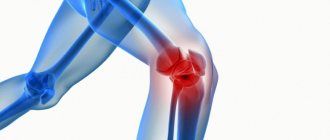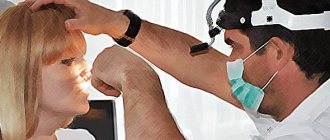What is the role of the adrenal glands?
One of the important organs of the endocrine system is located in the abdominal cavity behind the kidneys. Consists of two structures: the cortex and the medulla.
The cortex, located in 3 zones: reticular, fascicular and glomerular, performs different functions:
- in the zona glomerulosa, hormones are produced (aldosterone, corticosterone, deoxycorticosterone);
- in the zona fasciculata – corticosterone;
- in the reticular zone – the secretion of sex androgens (glands) is active; influencing libido, increasing strength and muscle mass; in men, regulation of lipid and cholesterol levels in the blood.
The cortical substance promotes:
- synthesis and production of hormones (cortisol and corticosterone), in particular sex hormones;
- maintaining water and electrolyte balance under control. The cortex is responsible for the production of corticosteroid hormones. The medulla is designed to synthesize;
- production of norepinephrine, adrenaline and increased blood glucose;
- stimulation of the heart muscle;
- regulation of blood pressure;
- dilation of the bronchi.
In general, the adrenal glands in men are actively involved in:
- formation of genital organs in men;
- regulation of water and electrolyte balance;
- maintaining normal blood pressure;
- increasing the efficiency of muscle strength;
- increased blood sugar levels.
The production of adrenaline helps fight stress and injury, increase positive emotions, strength and power in a person, and resistance to various pain sensations.
Norepinephrine also actively fights stress and negative external influences on the body, takes an active part in regulating blood pressure and stimulating the work of the heart muscle.
Adrenal hormones are extremely important for maintaining all functions in the body; a deficiency or excess leads to the development of serious diseases.
Adrenal insufficiency
MMA named after I.M.
Sechenova N
Adrenal insufficiency (adrenal insufficiency, hypocorticism, NN) is a clinical syndrome caused by insufficient secretion of hormones from the adrenal cortex as a result of dysfunction of one or more parts of the hypothalamic-pituitary-adrenal system (HPA).
According to the initial localization of the pathological process, NN is divided into primary
(damage to the adrenal cortex itself, 1-NN) and
central forms: secondary
, resulting from a violation of the secretion of adrenocorticotropic hormone (ACTH) and
tertiary
, developing with a deficiency of corticotropin-releasing hormone (CRH). Secondary and tertiary NN are combined into central forms due to the complexity of their differential diagnosis in clinical practice. They are often designated “secondary NN” (2-NN).
Reasons 1-NN
can be:
1. Autoimmune destruction of the adrenal cortex (80–85% of all cases of 1-NN):
- isolated 1-HH of autoimmune origin;
- 1-NN in the framework of autoimmune polyglandular syndromes.
2. Tuberculosis of the adrenal glands (5–10%).
3. Adrenoleukodystrophy (about 6% of all cases of 1-NN).
4. Metastatic lesion of the adrenal cortex.
5. Damage to the adrenal glands due to disseminated fungal infections.
6. HIV-associated complex.
7. Iatrogenic 1-NN (bilateral adrenalectomy for Itsenko-Cushing disease, bilateral hemorrhage in the adrenal glands during anticoagulant therapy).
Central forms
adrenal insufficiency: hypothalamic-pituitary diseases (panhypopituitarism, pituitary tumors, surgical interventions on the pituitary gland, etc.).
1-NN is a relatively rare disease - from 40–60 to 100–110 new cases per 1 million adults per year. The true incidence of central forms of NN is unknown, but its most common cause is suppression of the HPA axis during chronic glucocorticoid therapy. Due to the fact that 1-HH is the most common type in clinical practice (more than 95%), consideration of various aspects of this type of hypocortisolism is given the main place in the article.
The clinical picture of the disease associated with the destruction of the adrenal glands by a pathological process was first fully described in 1855 by the English physician Thomas Addison (1793–1860). Since then, 1-HH of tuberculous and autoimmune etiology has been designated as Addison's disease
.
Etiology of primary hypocortisolism
Autoimmune damage to the adrenal cortex
Autoimmune destruction of the adrenal cortex (autoimmune adrenalitis) is currently the main cause of 1-NN. It accounts for up to 90% or more of 1-HH cases in developed countries. It should be noted that if in the second half of the 19th and early 20th centuries autoimmune destruction accounted for no more than 15-20% of all cases of Addison's disease, then throughout the 20th century the ratio of etiological factors of primary hypocorticism gradually changed towards the predominance of autoimmune destruction over tuberculosis. Thus, in the 40–50s, adrenal tuberculosis accounted for 48% of cases of 1-NN, while in the 80–90s this figure decreased to 15% (Fig. 1). In the near future, due to a significant increase in the incidence of tuberculosis, we can expect a slight increase in the frequency of 1-HH tuberculous etiology.
Rice. 1. Dynamics of the etiological structure of primary hypocortisolism (% of the total number of those examined)
The results of studies in the early 90s showed that specific immunological markers of autoimmune destruction of the adrenal cortex are antibodies to the adrenal steroidogenesis enzymes 21-hydroxylase (P450c21), 17a-hydroxylase (P450c17) and the side chain cleavage enzyme (P450scc). With isolated 1-HH, antibodies to 21-hydroxylase are of greatest importance. While the significance of these antibodies as a serological marker of 1-HH autoimmune genesis is beyond doubt, their pathogenetic role in the destruction of the adrenal cortex remains completely unknown.
Autoimmune polyglandular syndromes
A fundamental aspect when discussing the etiology of 1-NN is autoimmune polyglandular syndromes (APS). APS is a primary autoimmune lesion of two or more peripheral endocrine glands, usually leading to their failure, often combined with various organ-specific non-endocrine diseases of autoimmune origin. Currently, based on clinical and immunogenetic characteristics, APS types 1 and 2 (APS-1 and APS-2) are distinguished (Tables 1 and 2).
APS-2
is the most common, but less studied version of APS. In turn, the most common variant of APS-2 is Schmidt's syndrome, which is a combination of 1-NN and autoimmune thyropathies (autoimmune thyroiditis or diffuse toxic goiter). Less common is the combination of 1-NN with type I diabetes mellitus (Carpenter's syndrome).
Many of the diseases within APS-2 are associated with histocompatibility antigens - HLA-B8, HLA-DR3, HLA-DR4, HLA-DR5. However, at present, no significant immunogenetic differences have been identified between isolated autoimmune endocrinopathies and those within APS-2. In most cases, APS-2 occurs sporadically, but many cases of familial forms have been described, in which the disease is observed in different family members over several generations. APS-2 is approximately 8 times more common in women, manifests itself in middle age (between 20 and 50 years), and the interval between the clinical debut of its individual components can be more than 20 years. In 40–50% of patients with initially isolated chronic NN (1-CNH), another autoimmune endocrinopathy sooner or later develops.
APS-1
(APECED-Autoimmune polyendocrinopathy-candidiasis-ectodermal-dystrophy, MEDAC-Multiple Endocrine Deficiency Autoimmune Candidiasis, candido-polyendocrine syndrome) is a rare disease with an autosomal recessive type of inheritance or less frequently occurring sporadically, which is characterized by the
classic triad
described by Whiteker:
mucous- cutaneous candidiasis, hypoparathyroidism, 1-CNH
. APS-1 usually debuts in childhood. In the vast majority of cases, the first manifestation is mucocutaneous candidiasis, which develops in the first 10 years of life, more often at the age of about 2 years, with damage to the mucous membranes of the oral cavity, genitals, as well as skin, nail folds, nails, less common is gastrointestinal -intestinal tract (GIT), respiratory tract. Against the background of mucocutaneous candidiasis, 84% of patients develop hypoparathyroidism, which develops in 88% of patients in the first 10 years. The most significant discovery in recent years in the field of APS research is the discovery of a gene whose mutations lead to the development of APS-1. This gene is located on chromosome 21q22.3 and is named AIRE-1 (for autoimmune regulator). The discovery of the AIRE-1 gene is of general medical importance. The genetic component is assumed to be one of the principal factors in the development of most autoimmune diseases. However, from the standpoint of genetics, autoimmune diseases are polygenic or diseases with a hereditary predisposition.
With regard to APS-1, we are dealing with the only autoimmune disease known in human pathology (!) with a monogenic, i.e. Mendelian, the nature of inheritance, when the autoimmune process in most endocrine glands and many other organs is caused by a mutation of one single gene.
In our study, when dynamically assessing the ratio of the frequency of isolated 1-NN and 1-NN within the APS, it was revealed that if in the 30–50s of the twentieth century, 1-CN within the APS occurred in 13% of cases, then by 80– In the 90s, this figure increased to 34%, and therefore we can conclude that the next stage of the pathomorphosis of Addison’s disease is the gradual transition of this pathology into the category of APS, primarily APS-2.
Adrenal tuberculosis
As already indicated, destruction of the adrenal cortex by the tuberculosis process ranks second among the etiological factors of 1-NN. Adrenal tuberculosis develops due to hematogenous spread of mycobacteria. Usually, both the cortex and the medulla are involved in the process (the latter phenomenon appears to have virtually no clinical significance). As in the case of autoimmune damage, in the tuberculous process, NN clinically manifests itself only when 90% of the cortex of both adrenal glands is destroyed. With adrenal tuberculosis, in most cases, patients have traces of previous tuberculosis or an active process.
Adrenoleukodystrophy
Adrenoleukodystrophy (ALD, Siemerling-Creutzfeldt disease, melasma leukodystrophy) is the most common inherited peroxisomal disease with an X-linked recessive mode of inheritance, which is characterized by excessive accumulation of saturated long-chain fatty acids (LCFA), usually in myelin, manifested in predominantly white lesions. substances of the central nervous system, adrenal cortex and testicles. The disease is caused by a deletion of the ALD gene on the long arm of the X chromosome (Xq28), manifested by a deficiency of lignoceroyl-CoA synthetase. This, in turn, leads to disruption of the b-oxidation of saturated FA (having 24–32 carbon atoms) in peroxisomes and their subsequent accumulation together with cholesterol esters in the cells of the nervous system and adrenal cortex. The estimated prevalence of the disease is 1 in 100–150 thousand men.
There are at least 6 clinical phenotypes of ALD, which differ in form: from a severe childhood cerebral form to an asymptomatic course. In the same family, as a rule, different ALD phenotypes occur. The childhood cerebral form is phenotypically the most severe variant of the course of ALD. Patients are practically healthy until the age of 2–10 years, when adrenal insufficiency and severe progressive neurological dysfunction manifest. After manifestation, symptoms rapidly progress and death occurs within 2–4 years. Adolescent cerebral and adult cerebral forms occur in a similar way, but at a later age. The following 2 forms are of greatest interest to us. In adrenomyeloneuropathy (35% of cases of ALD), which, as a rule, manifests itself in the 3rd–4th decade of life, against the background of progressive neurological symptoms (spastic paraparesis of the legs, impaired vibration sensitivity, impaired sphincter activity), 2/3 of patients develop 1 -NN. Finally, in 10–20% of cases of ALD, the only manifestation of the disease is NN without any evidence of neurological dysfunction. More than half of women who are carriers of ALD have certain neurological manifestations of the disease and hypocortisolism of varying severity, which is associated with uneven and preferential inactivation of the X chromosome, which does not have a mutant gene.
Metastatic lesion of the adrenal glands
In itself, damage to the adrenal glands by tumor metastases is quite common. Thus, it was noted that metastases of breast cancer affect the adrenal glands in 58% of cases, bronchogenic lung cancer - in 36–40%, melanoma - in 33% of cases. At the same time, 1-HH develops very rarely, since, as indicated, this requires the destruction of 90% of the cortex of both adrenal glands. The most common tumor whose metastases cause the development of the clinical picture of hypocortisolism is non-Hodgkin large cell lymphoma; somewhat less frequently, the cause of the disease is metastases of bronchogenic lung cancer.
Damage to the adrenal glands in HIV infection
Subclinical 1-NN is detected in 8–12% of patients with HIV infection. Most often it develops as a result of damage to the adrenal tissue by an infiltrative process followed by its destruction (cytomegalovirus infection, fungal infections, Kaposi's sarcoma, lymphoma, etc.). The use of various medications that affect steroidogenesis (ketoconazole, rifampicin, phenytoin) can also cause 1-NN.
Pathogenesis and clinical manifestations of adrenal insufficiency
Primary adrenal insufficiency
1-HH is based on absolute corticosteroid deficiency
. Aldosterone deficiency leads to loss of sodium and water through the kidneys and gastrointestinal tract with the development of dehydration, hypovolemia, hypotension, and progressive hyperkalemia. Deficiency of cortisol, the main adaptogenic hormone of the human body, leads to a decrease in resistance to various endo- and exogenous stressors, against the background of which (most often against the background of infections) decompensation of NN occurs. Of fundamental importance are the loss of cortisol functions such as stimulation of gluconeogenesis and glycogenolysis in the liver, as well as the permissive effects of cortisol on thyroid hormones and catecholamines.
The clinical picture of 1-NN was described quite fully by Thomas Addison himself. In this regard, only minor additions have been made to this description over the past 150 years.
1-NN manifests itself in middle age (between 20 and 50 years). Currently, the disease is significantly more common in women, which is associated with the predominance of 1-HH of autoimmune origin. Addison's disease of tuberculous etiology affects men and women equally often.
Hyperpigmentation of the skin and mucous membranes
- the most famous and typical symptom of 1-NN, which is pathogenetically related to the fact that with 1-NN there is hypersecretion of not only ACTH, but its precursor - propiomelanocortin, from which, in addition to ACTH, melanocyte-stimulating hormone is formed in excess. Hyperpigmentation is most noticeable on exposed parts of the body (face, arms, neck), in places of friction (skin folds, places of friction with clothing), and places of natural accumulation of melanin. Hyperpigmentation of mucous membranes (oral cavity, gums, buccal mucosa at the level of teeth, friction points of dentures) is of fundamental importance.
Weight loss
– typical symptom of NN; a progressive increase in the patient's body weight practically excludes the diagnosis. Weight loss is usually significant, reaching 5–20 kg.
General and muscle weakness
– at the beginning of the disease it can be expressed moderately (decreased performance) and reaches significant degrees with decompensation of the disease (up to adynamia).
A characteristic symptom of 1-NN is mental depression
.
The cardinal symptom of 1-NN is arterial hypotension
. Severe systolic and diastolic hypertension in most cases allows us to exclude the diagnosis.
Dyspeptic disorders of varying severity
are almost always available. More often it is poor appetite and nausea, periodically occurring diffuse abdominal pain, less often - vomiting, upset stool. A characteristic symptom of 1-NN, pathogenetically associated with severe sodium loss, is an addiction to salty foods. In a number of cases, we observed patients using salt in its pure form, however, many patients did not present this complaint at all. Hypoglycemic attacks are a rare symptom of 1-NN; they more often occur with 2-NN due to the insignificant severity of other symptoms. In principle, it can be noted that none of the individual listed symptoms of 1-NN are specific to this disease. It is only the combination of these symptoms that matters.
In the clinical picture in patients with APS-2, manifestations of 1-NN prevail. Hyperpigmentation may be mildly expressed, especially with a combination of 1-NN and hypothyroidism. A typical mistake is to interpret a moderate increase in the level of thyroid-stimulating hormone (TSH) in the phase of 1-NN decompensation as primary hypothyroidism. This increase in TSH levels is associated with adenopituitary dysfunction due to hypocortisolism. The test must be repeated after achieving clinical and laboratory compensation of 1-NN, supplementing it with a study of the level of antithyroid antibodies and ultrasound of the thyroid gland. Typical signs of the development of 1-NN against the background of type 1 diabetes mellitus are a decrease in the dose of insulin required for the patient and a tendency to hypoglycemia, which, despite the seemingly milder course of diabetes, are combined with weight loss, dyspeptic disorders, and hypotension.
Secondary hypocortisolism
The most important pathogenetic difference between 2-NN is the absence of aldosterone deficiency. ACTH deficiency in this case leads to a deficiency of cortisol and androgens, but does not affect the production of aldosterone, which is practically independent of adenopituitary influences, the secretion of which is regulated by the renin-angiotensin-sodium-potassium system. In this regard, the symptoms of 2-NN will be quite poor. Symptoms such as arterial hypotension, dyspeptic disorders, and addiction to salty foods will not be expressed. The fundamental clinical difference of 2-NN is the absence of hyperpigmentation of the skin and mucous membranes. General weakness, weight loss, and, less commonly, hypoglycemic episodes come to the fore in the clinical picture. Diagnosis is facilitated by the presence of anamnestic or clinical data on pituitary pathology, operations on the pituitary gland, and long-term use of corticosteroids.
Acute hypocortisolism
The most common cause of acute hypocortisolism is decompensation or acute manifestation of chronic forms of HF, the etiology of which was discussed earlier. Thus, severe symptoms characteristic of chronic NN will almost always be identified. Less commonly, we talk about hemorrhagic adrenal infarction, the pathogenesis of which is based on DIC syndrome in septic conditions (Waterhouse-Friderichsen syndrome) and various coagulopathies. In the pathogenesis of acute hypocortisolism, circulatory insufficiency and dehydration are of fundamental importance. There are three main forms of acute NN.
1. Cardiovascular.
The phenomena of collapse and acute cardiovascular failure dominate.
2. Gastrointestinal.
Dyspeptic symptoms dominate: severe vomiting, diarrhea. This form must be differentiated from foodborne toxic infections.
3. Cerebral form
(meningoencephalitic). Patients are in prostration, often in a delirious state, with pronounced neurological symptoms.
As a rule, there is a combination of all three groups of symptoms of varying severity.
The diagnosis of acute HF is usually based solely on the clinical picture; Certain importance is given to identifying characteristic disturbances in electrolyte levels using express methods.
Diagnostics
Nonspecific laboratory changes
Chronic 1-NN is characterized by hyperkalemia and, less commonly, hyponatremia. In addition, normochromic or hypochromic anemia, moderate leukopenia, relative lymphocytosis and eosinophilia are often observed in the blood. These data are of limited value in clinical practice.
Hormone level studies
The first level test in the diagnosis of NN is the determination of the daily excretion of free cortisol in urine
. Studies such as determining the excretion of 17-hydroxycorticosteroids (17-OX), 11-hydroxycorticosteroids (11-OX) and 17-ketosteroids (17-KS) are considered uninformative and should not be used either for diagnosing NN or in clinical medicine in general. . (A typical diagnostic error is studying the level of 17-CS excretion to diagnose hyperandrogenemia in gynecological practice.)
Determining blood cortisol levels has limited diagnostic value, since in many patients with BN it is often at the lower limit of normal. However, a marked decrease in this indicator may be important - a cortisol level of less than 3 μg/dL (83 nmol/L) is absolutely diagnostic of BN.
With a detailed clinical picture of primary hypocortisolism, the detection of a significant decrease in the daily excretion of free cortisol in the urine makes it possible to make a diagnosis and begin treatment (Fig. 2).
Rice. 2. Scheme of laboratory diagnosis of primary hypocortisolism with a detailed clinical picture
With an erased clinical picture of 1-NN, as well as with borderline or questionable results of determining cortisol excretion, patients are advised to perform
a test with 1-24 ACTH
(the first 24 amino acids of the 39-amino acid ACTH molecule) (Fig. 3). A stimulation test with a study of the level of cortisol in the blood plasma 30 and 60 minutes after intravenous administration of 250 mg (25 units) of 1-24 ACTH per 5 ml of saline is a classic study in the diagnosis of primary hypocortisolism. An increase in cortisol levels greater than 20 mcg/dL (550 nmol/L) reliably excludes BN. For example, in a healthy person, maximum stimulation of the adrenal cortex is caused by the administration of only 1 mcg of 1-24 ACTH.
Rice. 3. Laboratory diagnosis of adrenal insufficiency with a blurred clinical picture
In clinical practice, it is extremely rare that there is a need to differentiate 1-NN and 2-NN using laboratory methods.
, determination of the level of ACTH
can be used , which will be increased with 1-NN (more than 100 pg/ml) and decreased with 2-NN. It should be noted that determining the ACTH level has no independent significance for diagnosing NN. In addition, 1-NN will be characterized by an increase in renin activity in the blood plasma (or an increase in renin levels), which is associated with aldosterone deficiency developing with 1-NN, which is not observed with 2-NN.
Approaches to laboratory diagnosis of secondary hypocortisolism are somewhat different (Fig. 4). In cases of recently developed 2-NN, for example immediately after surgery on the pituitary gland, administration of 1-24 ACTH will lead to an adequate release of cortisol, since the adrenal cortex has not yet had time to atrophy. The same applies to subclinical 2-NN, for example in large pituitary adenomas. In this situation, administration of such a large dose of ACTH as 250 mcg can cause an adequate response in the moderately hypotrophic adrenal cortex. Thus, a test with 1-24 ACTH will have diagnostic value only in cases of long-term and severe 2-NN. In general, tests with insulin hypoglycemia and metyrapone (metopyrone) are of greatest importance in the diagnosis of 2-NN.
Rice. 4. Laboratory diagnosis of secondary hypocortisolism
In
the insulin hypoglycemia test,
short-acting insulin is administered intravenously at a dose of 0.1–0.15 U/kg. The test will have diagnostic value if the patient experiences a decrease in glycemic levels of less than 2.2 mmol/l and develops hypoglycemic symptoms. If, against this background, the blood cortisol level exceeds 20 mcg/dL (550 nmol/l), we can talk about the normal functioning of the HPA axis and the absence of both 2-NN and 1-NN. The test is contraindicated in patients with severe cardiac and other pathologies, arrhythmias, and epilepsy.
Metyrapone (metopyrone) test
examines the presence of functional reserves of ACTH of the pituitary gland. Metyrapone blocks the adrenal enzyme 11b-hydroxylase, which converts 11-deoxycortisol into cortisol. Normally, when taking metyrapone, blockade of cortisol production will lead to stimulation of ACTH secretion, which in turn activates steroidogenesis proximal to the enzyme block and will lead to the accumulation of excess 11-deoxycortisol. The drug in a dose of 30 mg/kg is drunk by the patient simultaneously at night at 24.00. The next morning at 8.00 am, blood is drawn to determine the content of cortisol and 11-deoxycortisol. Normal HPA function is reflected by an 11-deoxycortisol level greater than 7 mcg/dL (200 nmol/L). BN is diagnosed when 11-deoxycortisol does not reach 7 mcg/dL and cortisol levels are low (less than 5 mcg/dL (138 nmol/L)). The latter indicates adequate blockade of 11b-hydroxylase. As in the test with insulin hypoglycemia, in the test with metyrapone, an increase in plasma ACTH levels of more than 150 pg/ml is normally observed.
Etiological diagnosis
After laboratory confirmation of the presence of NN in a patient, the next step is to determine its cause. In clinical practice, after establishing the diagnosis of 1-NN, it is most optimal to immediately exclude its tuberculous etiology. For this purpose, a chest x-ray and examination by a phthisiatrician are performed. In the absence of data on the tuberculosis process (and this is the most common situation), a diagnosis of presumably idiopathic (autoimmune) Addison's disease is made. A strong argument in favor of this diagnosis would be the presence of concomitant autoimmune endocrinopathies in the patient, i.e. actually APS. It should be noted that it is quite possible that the patient has a combination of old tuberculous changes in the lungs and 1-HH of autoimmune origin. Such cases have been repeatedly described in the literature and observed by us.
A test that could easily solve this diagnostic problem is the determination of circulating antibodies to 21-hydroxylase
(P450c21). These antibodies are a highly sensitive and specific marker of 1-HH autoimmune genesis. Thus, in our study, these antibodies were detected in 83–90% of cases with idiopathic 1-NN, which lasted up to 15 years, and were not detected in any patient with adrenal tuberculosis. Unfortunately, at present, this research has not received widespread clinical use.
Traditionally, in the etiological diagnosis of 1-NN , instrumental methods allowing visualization of the adrenal glands
(X-ray examination, computed tomography), a small role is assigned. However, a number of authors report that in most cases of adrenal tuberculosis there is organ enlargement according to computed tomography (CT) and magnetic resonance imaging (MRI), and in some relatively rare cases calcifications can be detected. These methods are of greatest importance in the etiological diagnosis of 2-NN.
A laboratory marker of ALD is a high level of FA.
This study is especially indicated when 1-NN is combined with various types of neurological symptoms (in particular, peripheral neuropathy). To establish the diagnosis of ALD, electromyography, as well as CT and MRI of the brain are of particular importance.
Treatment
Replacement therapy for acute hypocortisolism and severe decompensation of chronic hypocortisolism
1. Without waiting for the results of laboratory tests (if possible, preliminary blood sampling to determine the level of cortisol, ACTH, potassium, routine hematological and biochemical tests), as early as possible, begin intravenous administration of 2-3 liters of saline solution
(at a rate of 500 ml/hour; in a collaptoid state, in a stream), possibly in combination with a 5–10% glucose solution. During the 1st day, at least 4 liters of liquid are administered. The administration of potassium-containing and hypotonic solutions, as well as diuretics, is contraindicated.
2. 100 mg of hydrocortisone
intravenously
immediately, then every 6 hours for 1 day.
As an alternative (during delivery to the clinic) - 4 mg of dexamethasone intravenously
(or an equivalent dose of prednisolone - 40 mg), followed by transition to hydrocortisone therapy. In parallel - symptomatic therapy, most often antibiotic therapy for infectious processes that caused decompensation of the disease.
3. On days 2–3, with positive dynamics, the dose of hydrocortisone is reduced to 150-200 mg/day
(with stable hemodynamics, administered intramuscularly). Mineralocorticoids are not required until the daily dose of hydrocortisone is less than 100 mg/day.
With moderately severe decompensation, as well as newly diagnosed disease, therapy, as a rule, begins with intramuscular administration of 100–150 mg of hydrocortisone per day (for example, 75 mg in the morning, 50 mg at lunchtime and another 25 mg in the evening). After a few days, the dose of the drug is reduced and switched to maintenance replacement therapy with tableted corticosteroids. It should be noted that the pronounced positive effect of corticosteroid therapy has important diagnostic significance. In the presence of NN, patients literally notice a noticeable improvement in their well-being within days 1–3.
Replacement therapy for chronic hypocortisolism
1-NN replacement therapy involves the mandatory combination of gluco- and mineralocorticoids. A typical mistake is treating Addison's disease with glucocorticoid monotherapy. With 2-NN, there is no mineralocorticoid deficiency and there is no need to prescribe mineralocorticoids (9a-fluorocortisol), unless the patient has severe arterial hypotension.
Mineralocorticoid replacement therapy
Modern 1-NN replacement therapy with mineralocorticoids involves the use of only one drug – fludrocortisone
. The drug deoxycorticosterone acetate has insufficient mineralocorticoid activity and is inactivated upon first passage through the liver; It is currently not in use and has been discontinued.
Fludrocortisone is prescribed once a day at a dose of 0.05–0.1 mg (usually daily in the morning). In clinical practice, it is recommended to use the following criteria for the adequacy of fludrocortisone therapy:
- normal plasma potassium and sodium levels;
- normal or moderately increased level of plasma renin activity;
- normal (comfortable) blood pressure;
- absence of swelling, fluid retention (signs of drug overdose).
Glucocorticoid replacement therapy
The doctor has a large number of glucocorticoids in his arsenal, which can potentially be used for replacement therapy for NN.
The most used drug in the world for replacement therapy of NV is tableted hydrocortisone
, followed by the much less commonly used
cortisone acetate
. In Russia, tableted hydrocortisone has so far been practically not used and most patients receive synthetic glucocorticoids, less often cortisone acetate. A negative property of synthetic drugs is their relatively narrow therapeutic range. Particular caution should be exercised when prescribing long-acting drugs (dexamethasone), which are associated with a high incidence of overdose. The drug of choice in children and adolescents is hydrocortisone, since a number of studies have revealed growth retardation in children with NN during therapy with synthetic drugs. In this regard, when using synthetic glucocorticoids, a higher incidence of osteopenia syndrome can be expected than when using hydrocortisone therapy.
| Glucocorticoid replacement therapy regimens: 1. Using short-acting drugs: A. Twice-daily regimen: hydrocortisone - 20 mg in the morning and 10 mg in the afternoon (or cortisone acetate 25 and 12.5 mg, respectively). B. Three times a day regimen: hydrocortisone - 15-20 mg in the morning, 5-10 mg in the afternoon, 5 mg in the evening (or cortisone acetate 25, 12.5, 6.25 mg, respectively). 2. Using drugs of medium duration of action: prednisolone - 5 mg in the morning and 2.5 mg in the afternoon (much less often methylprednisolone - 4 and 2 mg, respectively). 3. Using long-acting drugs: dexamethasone - 0.5 mg per day once (late at night or in the morning). 4. All possible combinations of the listed glucocorticoids. |
On the other hand, when treating with hydrocortisone and cortisone acetate, certain difficulties are created by the relatively short period of action of the drugs.
With the classic two-time use of these drugs, patient complaints of weakness in the evening and early morning before taking hydrocortisone are quite typical. The following criteria for the adequacy of the glucocorticoid component of NN replacement therapy can be distinguished:
• minimally expressed complaints of weakness and low performance;
• absence of pronounced hyperpigmentation of the skin and its gradual regression;
• maintaining normal body weight, no complaints of constant hunger and no signs of overdose (obesity, Cushingoidization, osteopenia, osteoporosis).
Reliable objective (laboratory) criteria for the adequacy of glucocorticoid replacement therapy for NN are currently absent, and the selection of therapy is based almost exclusively on the clinical picture and the doctor’s experience.
Principles of treatment of APS and ALD
Treatment of APS consists of replacement therapy for insufficiency of the affected endocrine glands. It should be borne in mind that when hypothyroidism and NN are combined, L-thyroxine therapy is prescribed only after compensation for NN. When carrying out replacement therapy for a combination of hypoparathyroidism and 1-HH, it should be borne in mind that normally cortisol and vitamin D have opposite effects on the intestinal absorption of calcium. Thus, with cortisol deficiency, there is an increased risk of overdose with vitamin D preparations. On the other hand, the administration of large doses of corticosteroids, even with 1-H decompensation combined with hypoparathyroidism, can provoke severe hypocalcemia.
There are currently no proven effective treatment or prevention methods for ALD. Treatment options include diet, immunosuppressive therapy, bone marrow transplant, and gene therapy.
A promising direction for the treatment of NN is the addition of drugs of the main adrenal androgen dehydroepiandrosterone to the standard described therapy.
Literature:
1. Melnichenko G.A., Fadeev V.V. Laboratory diagnosis of adrenal insufficiency. // Problem endocrinol. 1997; 43 (5): 39-47.
2. Melnichenko G.A., Fadeev V.V., Buziashvili I.I. Etiological aspects of primary chronic adrenal insufficiency. // Problem endocrinol. 1998; 44 (4): 46-55.
3. Fadeev V.V., Buziashvili I.I., Dedov I.I. Etiological and clinical structure of primary chronic adrenal insufficiency: a retrospective analysis of 426 cases. // Problem endocrinol. 1998; 44 (6): 22-6.
4. Fadeev V.V., Shevchenko I.V., Melnichenko G.A. Autoimmune polyglandular syndromes. // Problem endocrinol. 1999; 45 (1): 47-54.
5. Czerwiec FS, Cutler GB Modern approach to corticosteroid replacement therapy. //Curr. Options in Endocrinol and Diabetes. 1996; 3: 239-46.
6. Oelkers W. Dose-response aspects in the clinical assessment of the hypothalamo-pituitary-adrenal axis, and the low-dose adrenocorticotropin test. //Eur. J. Endocrinol. 1996; 135: 27-33.
What are the types of adrenal gland diseases?
Addison's disease on the hands
Diseases of the adrenal glands can be divided into groups depending on the deficiency or excess of a particular hormone in the body. Primary, secondary or acute failure may develop.
- Primary deficiency, in which Addison's disease develops in women and men between the ages of 20 and 40, hormone production slows down and the process may stop completely. Patients experience: constant constipation or diarrhea, pain in the gastrointestinal tract, pressure surges, loss of appetite, development of colds, decreased concentration, memory and libido, loss of armpit and pubic hair in women, menstrual irregularities, obvious reduction in breast size and uterus in size, enlargement of the clitoris, development of infertility.
- Secondary failure leads to rare urination and loss of consciousness, which requires urgent hospitalization and medical care.
- Acute deficiency leads to Itsenko-Cushing's disease, pheochromocytoma, hyperaldosteronism in the case of an excess of hormone production against the background of the development of liver cirrhosis, heart failure, and increased production of the hormone aldosterone. Patients experience symptoms: constipation, cramps, fatigue, muscle weakness, headache. It is possible to develop a malignant (benign) tumor in the cells of the adrenal medulla.
When hormones are produced in excess (adrenaline, norepinephrine, dopamine), people's blood pressure increases; when they are produced in insufficient quantities, tumor processes begin to develop.
The hormonal levels are not stable in girls during puberty: blood sugar levels are increased, blood pressure jumps, there is excessive excitability, sharp abdominal pain before menstruation, nausea, vomiting, convulsions, chills, dry mouth.
Why do hormones cause hypertension?
A number of hormonal molecules have a tropic effect on receptors of blood vessels and the heart. Adrenaline secreted by the adrenal cortex acts on the myocardium. It increases cardiac output and increases heart rate. Norepinephrine, which is also produced in the adrenal cortex, affects blood vessels. The latter have specific adrenergic receptors, the configuration of which allows hormones to attach to them and activate them. HA and other molecules work on a similar principle.
General symptoms of adrenal diseases
Symptoms of the disease in men and women due to malfunction of the adrenal glands are similar. Common ones include:
- a sharp decrease or gain in body weight;
- the appearance of pigmentation on the skin (photo above);
- disruption of the gastrointestinal tract;
- hair growth in women on the body according to the male type in case of failure of several hormones at once;
- decreased memory and concentration;
- nausea, vomiting;
- obesity;
- decrease in blood pressure.
If such signs appear, you should contact an endocrinologist or therapist for an examination.
It is possible that a tumor may develop in one of the glands; in this case, you cannot do without the help of an oncologist and a surgeon.
A lack or excess of hormones can lead to a malfunction of all systems and organs and negatively affect reproductive function. With diseases of the adrenal glands, women begin to suffer intolerance to sunlight, constant depression, chest pain, the appearance of pigment spots on the skin, disruption of the monthly cycle, a decrease in breast size, and enlargement of the clitoris.
Only timely diagnosis of the presence of adrenal gland diseases in women can protect against serious pathologies and problems in the future.
Hypersecretion of II-deoxycorticosterone
One of the causes of endocrine adrenal hypertension is the perverted production of 11-deoxycorticosterone. This substance is a precursor to the hormone cortisol. When enzymes malfunction, there is a failure in converting it into cortisol.
A large amount of accumulated 11-deoxycorticosterone leads to sodium retention, increased urinary potassium excretion, increased circulating blood volume and increased blood pressure. This pathology is a hypertensive form of CAH (associated with gene mutation).
When examining patients, an increase in levels of adrenal androgens in the blood serum and an increase in 17-ketosteroids in the urine are revealed. Treatment is carried out with the help of glucocorticoid hormones - hydrocortisone, prednisolone, dexamethasone.
How is diagnosis carried out?
First of all, you need to visit an endocrinologist who will examine and prescribe the following tests:
- Blood test and urinalysis;
- Magnetic resonance imaging (MRI);
- X-ray diagnostics of the head to determine the size of the pituitary gland;
- Non-hormonal tests;
- X-ray of bone tissue if osteoporosis is suspected;
- The so-called “radiation study” is a new study to obtain information about the functioning of the adrenal glands, the condition of nearby tissues and organs;
- Scintigraphy to prescribe the correct treatment.
Poor nutrition
The list of foods that increase blood pressure is long. It includes not only salted vegetables, fish and lard, but also food rich in so-called hidden salt: smoked sausages, some types of cheeses, almost all canned food, semi-finished meat products. It is very easy to overload the body with salt and cause fluid stagnation by regularly eating chips, snacks, and crackers; fast food is also very dangerous in this regard.
Increased blood pressure is caused by coffee, beer, strong alcohol, sweet soda, and energy drinks. The opposite effect is caused by drinks that have a natural (without the addition of synthetic organic acids) sour taste: light dry wine, berry fruit drinks, tea with lemon.
Treatment
If unpleasant symptoms have become painful, and general health has sharply deteriorated, then first of all, it is necessary to identify the type of pathology that led to functional damage to the adrenal glands. Treatment begins with eliminating the root cause that led to the disease.
Treatment is medicinal - hormonal drugs, to normalize hormonal levels, reduce the replenishment or eliminate excess hormones in the body, eliminate negative factors and symptoms that can aggravate the course of the disease.
Additionally, the doctor will prescribe vitamins and antiviral agents.
If drug treatment does not bring the desired results, then the only option is surgery to remove one or two glands at once.
Laser is used as a more gentle method of exposure. Incisions during surgery are minimal, and the subsequent recovery period is short.
For diseases of the adrenal glands, it is possible to prescribe hormonal drugs ( Agnukaston, Aromasin , etc.), in particular contraceptives, but the use should be carried out exclusively under the supervision of a doctor.
It is important to restore normal functioning of the adrenal glands. It is necessary to walk more in the fresh air, play sports, adjust the diet to include vitamins and minerals to support the functionality of the adrenal glands and stabilize the processes of hormone secretion.
At home, it is recommended to drink restorative teas and infusions by brewing medicinal herbs: chamomile, sage, eucalyptus, and thus constantly maintain the body in good shape.
Prognosis and prevention
The prospects for recovery largely depend on the exact causative factor that provoked adrenal insufficiency, as well as on the timeliness of treatment. If replacement therapy with the patient taking synthetic hormones was prescribed in the first days from the moment signs of adrenal pathology appeared, then tissue atrophy does not occur and the development of irreversible processes can be avoided. In this case, the prognosis for recovery is favorable, but only on the condition that the cause that caused the disease is eliminated and the adrenal glands will be able to restore their functional activity.
To prevent the occurrence of the disease in healthy people, as well as relapse in patients who have undergone replacement therapy, it is recommended to follow the following rules of prevention:
- prevent foci of chronic infection in the body;
- avoid taking hormonal drugs;
- monitor kidney health, do not overcool;
- lead a measured and healthy lifestyle;
- give up alcohol, tobacco, and drugs.
The stability of the adrenal glands is greatly influenced by the psycho-emotional state of a person. Therefore, it is necessary to avoid stress, nervous tension, and conflict situations. Following these simple recommendations will keep your adrenal tissue healthy and prolong your life.











